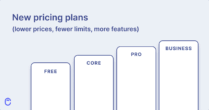This article comes from Jeremy Moser, co-founder of a uSERP. In this article, he shares his story of bootstrapping his agency from $0 to $80k+ MRR in just one year, including the mistakes, lessons learned, and tactics he used to do it.
At the end of 2019, I co-founded uSERP, a digital brand mention agency, with my business partner Brad.
With zero dollars in funding, we bootstrapped it from 1 initial client to producing $80k+ MRR in one year.
We’ve worked with, and continue to work with, brands like Preply, Freshworks, Hotjar, and countless more.
Here are some of the steps that led to our success, as well as many of the steps that held us back from accelerating our growth. (Because this post isn’t about bragging. It’s about learning from what we did right, and improving on what we did wrong.)
A few quick facts:
⌚ uSERP launched in Q4 of 2019, with a single client.
💰 We’ve raised $0 in capital, bootstrapping with a lean team
📈 Our growth came from a mix of inbound and outbound marketing/sales
🧑 When we hit $80k MRR, our team consisted of just 3 full-time people and a few part-time contractors, and we’re actively hiring
🌎 Our team is fully remote! Woo hoo!
A little bit about uSERP
I won’t bore you with too much background, but it’s good to understand what type of agency we are, what we do, and how we work.
uSERP is primarily focused on digital PR and brand mention aspects of SEO and link building.
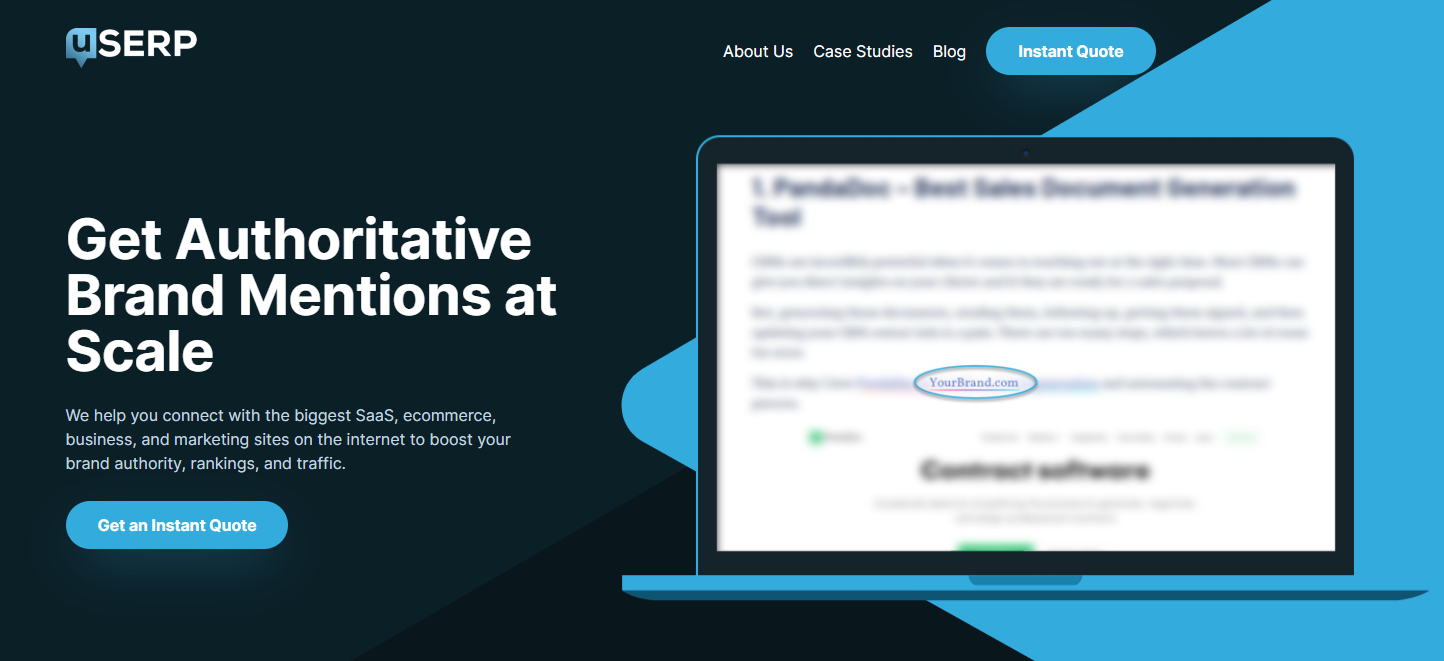
We help brands of all sizes and niches, from life insurance to SaaS all-stars, build their brand authority and increase organic rankings through targeted, high-impact brand mentions.
Our speciality is creating great content, securing high-authority links, and developing brand features. We also recently acquired two SaaS tools (Wordable and Responsely), which have blended well with our journey so far.
Okay, enough of the formalities, just dive into our journey from $0 to $80k+ monthly recurring revenue. 😃
Launch and prove concept early
Launching in Q4 of 2019, uSERP was a brand-new entity, built on a makeshift one-page WordPress theme:
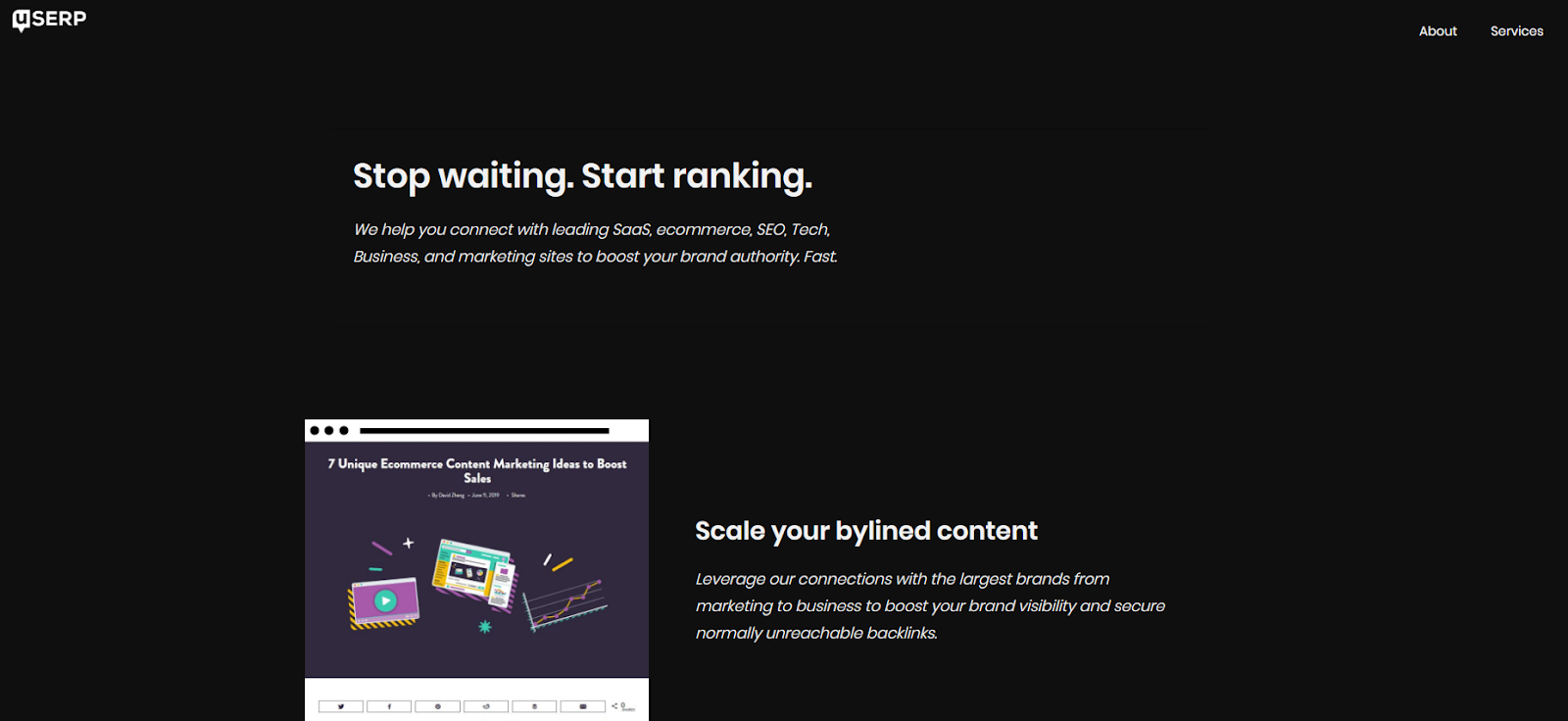
If you know, you know. 😂
We had no branding, no marketing, and no funding.
However, what did have was all that you really need when starting a new business, or agency in this case: someone willing to pay you.

Before uSERP, my business partner and I were producing long-form pieces for some of the biggest companies in SaaS.
We’d built a reputation in the space for:
- Great content
- Thought leadership on popular blogs
- Deliverability
During this time, we noticed an explosive need for content promotion, not just creation. But, not your typical promotion. Not just boring old social posts or PPC ads.
This looked like SEO-focused promotions like brand mentions, features, and white-hat link building. Agencies that did this type of work at the time were almost impossible to find. The ones you could find were unable to scale beyond a few small clients each month or deliver anything in a remotely timely manner.
We had clients who were constantly asking us if we could deliver in these areas. So, we formed uSERP, a niche, heavily-specialized agency built on literally usurping the competition on SERPs (search engine results pages).
Nerdy, I know!
We launched with one “client” who was interested in brand features and authority mentions.
Without a single direct product, service, or outline scope of work, we hit the ground running.
Instead of wasting time branding, creating sales decks, establishing a CRM and sales funnel, we dove into the deep end the following mindset:
If we can excel with this one client, we can map out a standard operating procedure that works, is scalable, and sells itself based on performance.
Lessons learned
When starting your business, don’t get hung up on the branding just yet. Prove the concept first. Hustle for those first few customers or clients to test, test, and test again.
There is no point in branding, paying for expensive site design, and spending weeks to months of time for setup work if you can’t execute. Focus on the task and deliverables at hand for the people paying you.
Plus, your business is so new that you likely aren’t sure what it is yet. Drop the typical marketing BS. Sell, deliver, scale.
Process and standardize to scale
Processes are never set in stone. But, establishing processes is critical to standardizing your business operations, and therefore, scaling.
Information that normally comes as a quick thought to you, doesn’t to others who haven’t spent weeks to months to years in the weeds of the business.
During the beginning stages of growth, I was leading the daily operations of the business full steam ahead.
Client emails, client meetings, outreach, writing, you name it—I was doing it.
And it worked great for the first few clients, but we soon realized that to actually scale this thing, we’d need to process out all of these tasks, standardize, and delegate.
To do so, we employed a few key SaaS tools that we still use to this day.
First off, we use Pipefy on a daily basis. Namely, their Kanban style workflow helps us to systemize effortlessly, breaking down a process into distinct stages with instructions. Within each business process, we’ve built detailed checklists of steps combined with Loom recorded video tutorials:

This makes our process repeatable, delivering the same end result each time. And if the end result isn’t the same, we can pinpoint the exact bottleneck to eliminate or improve upon.
In addition to Pipefy, a few Google Sheets, and Loom, we also currently use ClickUp for team task management.
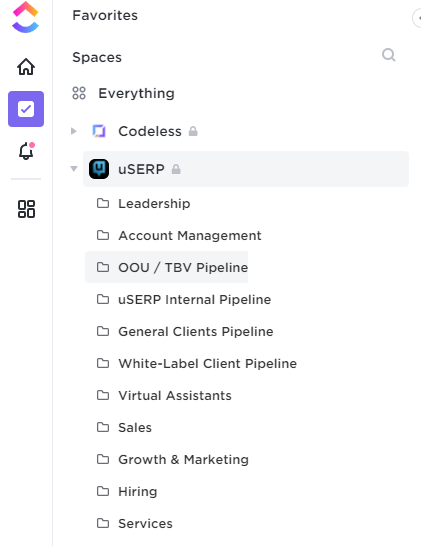
ClickUp is our project planning and resource hub, housing everything from our standard operating procedures to specific task management, project status, and more.
Lessons learned
Document processes as early as you can, once they’ve been proven. Repeatable processes should have clear enough documentation that you could hand it off to any capable person to produce almost as good quality work as you are doing, on their first try.
When it comes time to hire and scale, processes, videos, and demos are already ready to go.
Establish sales processes (both outbound and inbound)
After finding great success with our first client (who we still work with to this day) we began to increase sales through both outbound and inbound methods.
Namely, we used:
- In-network outreach: leveraging existing connections and referrals
- Value-based outreach: delivering free value as a conversation starter
- Building our personal network: connecting in Slack Groups, LinkedIn groups, and forums
- Thought-leadership: building our guest contributions
During this time, our MRR started to expand from the $15-20k range and just a few clients to $30-40k MRR.
Let’s briefly talk about how we did each.
In-network outreach:
This is pretty self-explanatory: we leveraged existing connections we had from our time in business to build more connections and referral networks that would pay dividends.
In fact, for a few connections we even earned them a few great backlinks and press mentions before they did a single thing for us. Why? Relationships are about helping each other out. If we simply sent an email begging for referrals, that wouldn’t drive value for our relationships.
This worked well enough for us to land multiple referral clients in 1-2 months, spawning a new outreach idea we call “value-based” outreach.
Value-based outreach:
Value-based outreach isn’t new, and we didn’t invent it. We just adapted it to our niche. We started researching potential brands with LinkedIn Sales Navigator, marking them as target accounts that we’d love to work with.
Brands that were in our SaaS space, had a budget for content marketing, and needed amplification.
Then, we hit the ground running in the background, without ever contacting them. We landed press mentions for their targets, and leveraged these press mentions as a way to cold-contact.
We kept it short, and sweet:
Hey ___,
Got you a great brand mention here:
Hope you like it! Maybe we can chat about how to scale these for [brand name]. Interested?
Our response rates improved overnight from generic cold outreach.
The biggest mistakes I see in cold outreach today is that the sender is asking for value, and rarely gives any in return. Very few people are going to stop their day to provide instant value to a stranger via cold email with no benefits to themselves.
Instead, we flipped the script, delivering something of instant, tangible value, and asking for just a minute of their time to chat in return.
Thought leadership:
Lastly, we focused heavily on joining like-minded groups on LinkedIn, Forums, Slack, and more.
These helped us expand our connections, thought-leadership opportunities, and even provided a few direct sales.
Lessons learned:
Tap into existing networks, and take virtual networking seriously. Engage with people, deliver value to them, and you’ll receive it in return.
For cold outreach, do something different that shows your target accounts you can fill gaps in their strategy, or deliver a better version of a product/service they already receive. Give them a free taste of what your service can do for them to reel them in.
These are great ways to get your foot in the door for a more targeted, high-impact sales pitch. Then, it’s up to you to close.
Mistakes 1 & 2: Operations and hiring/firing
Some of the first and most detrimental mistakes we made that slowed down growth revolved around the sectors of operations, hiring, and firing.
Operations:
The first mistake was failing to get out of operations fast enough. As a tiny company of just three full-time employees, I was still entrenched in the day-to-day operations of the agency. Everything from fielding daily client emails to status calls to ensuring deadlines and deliverables were up to snuff.
This means less time on sales, less time on outreach, less time on high-level marketing initiatives that kept leads engaged.
Our company was starting to grow rather quickly from sales initiatives and word of mouth, which was a catch-22: as our sales initiatives worked, our ability to keep doing said initiatives dropped due to increased clients and work loads.
In other words, we fell into the trap of producing waves of sales that were inconsistent, throwing operations into a proverbial state of highs and lows.
Hiring and firing
This leads me into mistake number two, not hiring fast enough.
This mistake is one that I’ve heard countless times from other friends in the agency space, but applies to many startups beyond SEO, SaaS, and so on:
Stop looking for the unicorn employee.
It’s easy to get caught up in the fantasy of hiring the perfect employee who instantly understands your business and skyrockets revenue. The employee you don’t even have to check in on that just produces 10x their salary in revenue right off the jump.
Sadly, that’s just a false reality. Every business is unique, has their own set of challenges, and their own diverse processes. No matter how excellent a candidate is on paper, it rarely translates into real work scenarios.
Instead of delaying your time to hire, as Hotjar would say: hire faster.
Look for potential employees that are:
- Putting in real, noticeable effort into their projects
- Can pay attention to detail
Our mindset at uSERP has been hiring to train, learn, and grow. Not hiring to instantly take our business from A to Z.
In practice, we started crafting paid test projects where we’d compensate eager candidates for their time spent, no matter if we worked with them or not. This gave us a clear sense of who was willing to put in the work and attention to detail required in our business to succeed.
In addition, we leveraged training modules created on Trainual to create a smooth onboarding process’, teaching each employee a company overview, tools training, systems training, and much more:
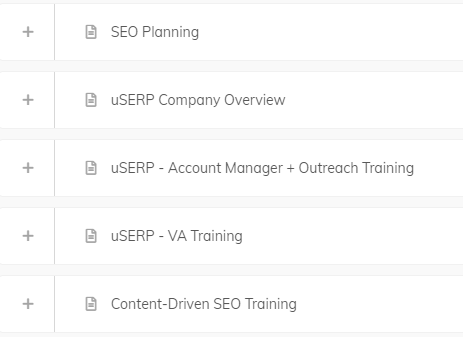
Lessons learned:
You can’t stay in your own company operations forever. At a certain point, sacrificing short-term profits and stability is required for future growth.
Start hiring faster once you’ve built a system that works. This will enable you to scale company growth while maintaining quality and efficiency.
Mistake 3: Pushover sales pricing
As we began increasing sales via inbound and outbound, our MRR was starting to increase month over month.
We made two mistakes in not getting out of operations fast enough, and not hiring and firing properly. Nearly simultaneously, we were also making a big mistake during the sales process:
Pushover sales pricing.
In other words, we were:
- Not conveying our value enough to prospects on our website and during emails
- Caving too quickly to negotiations for the sake of generating clients, or the promise of “future” work
Let’s first touch on the value aspect: Our main issue was failing to convey specific value to prospects on our website, leading to further issues on sales calls.
Our first hero header on our website was as follows:
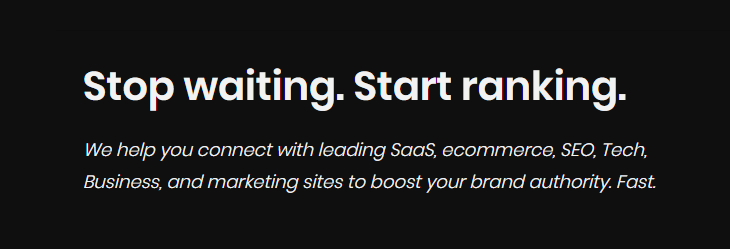
It’s not bad. But it’s not specific, either. It doesn’t tell the prospect exactly what they will get, or the true end user value.
For example, it conveys value in connecting them with leading sites to boost their authority. However, it doesn’t explain how they can start ranking and what factors of authority will be raised.
At the time of writing this, our new value proposition is much more clear:
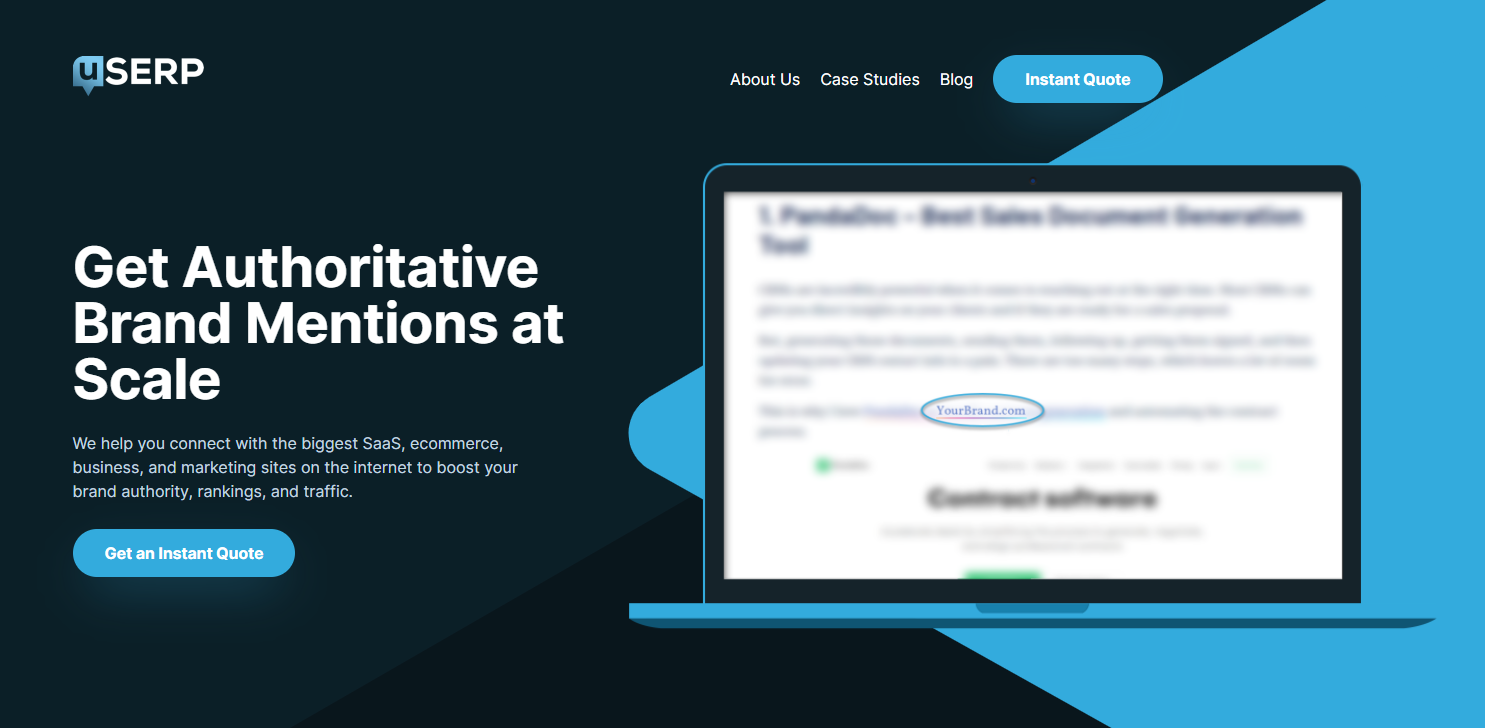
The headline tells them exactly what we can do for them: get authoritative brand mentions at scale.
The subheader breaks down the idea of authority into:
- Connecting with big brands
- Boosting branding
- Improving rankings
- Increasing traffic
We further break this down into three specific paths:
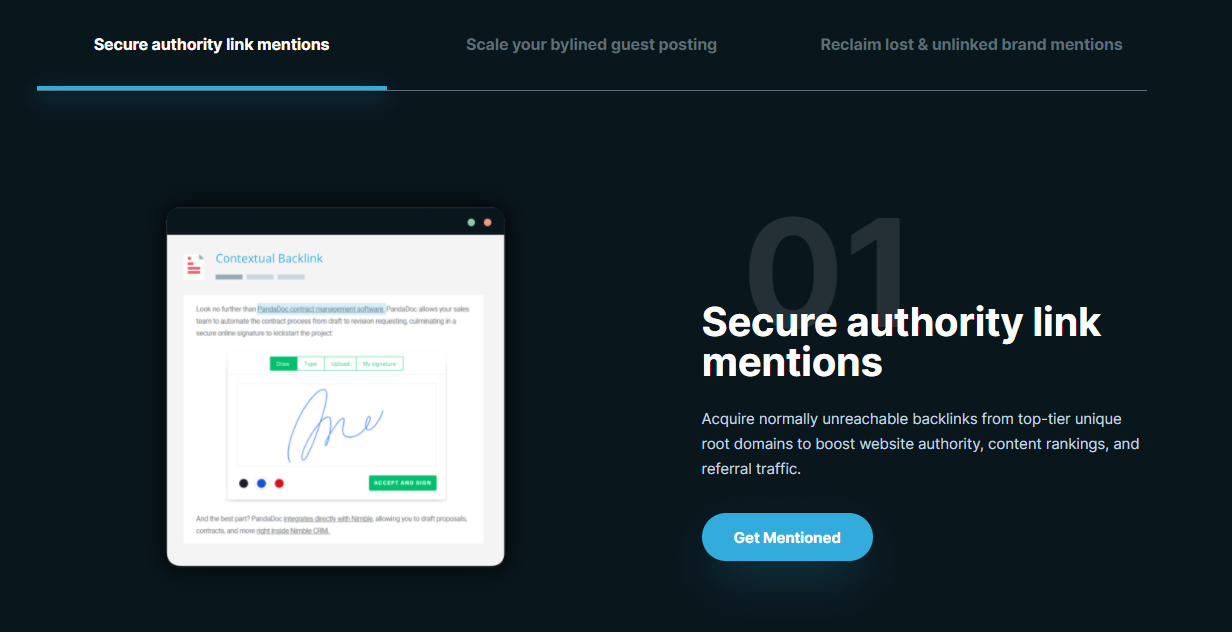
We then follow this up with common questions and objections that would have previously brought in lower quality leads looking to bargain our prices to the point of unprofitability:

The second piece of the puzzle with pushover pricing was caving too quickly on pricing negotiations for the sole purpose of landing a new account, and the promise of “future” work.
We’d hear from prospects all the time that “they’d give us so much work in the future if this worked out.” Or “If this goes well, we’ll use you for x,y, and z services too!”
These sound great in theory, but they almost never pan out in practice. Instead we found ourselves giving discounts too often to close faster, working with clients who just wanted to gouge services from us. When we started following up a few months down the line about their other businesses, we’d rarely hear back.
After many encounters like this, we shifted our discount strategy to drive value for both parties (our clients and ourselves): offering discounts for prepaying or auto-invoicing, and discounts for volume of services.
Upon shifting our strategy, we began spending less time on sales calls and emails, and more time with really strong prospects, contributing to a big increase in both MRR and our team’s mental well-being.
Lessons learned:
Don’t be a pushover on pricing if you are steadily growing.
Believe in the value of your product against competitors in the market, and stand firm on your pricing. Hone your brand messaging and sales process to focus on what prospects are looking to achieve, and how your services will expedite the process.
Doubling-down on success: Quality and pricing increased
After mistakes 1-3, we started correcting our path to success via standardizing/processing, dedicating time to direct sales, hiring and delegating in operations, and ironing out our lead gen process.
From here, we started doubling down on these highs and eliminating the lows.
Taking on fewer clients who stretched out margins too thin allowed us to focus more on our existing client base in addition to target accounts we hoped to work with.
This meant better quality control, dedicated account managers for customer service, lightning fast email responses, and close problem solving. All of this translated to more value for our clients, enabling us to increase the pricing of our services alongside that value.
During this phase, we also increased the minimum quality guidelines we’d set for client deliverables.
We began promising higher service levels that directly appealed to their needs:
- Increasing the quality of mentions via depth of topic
- Choosing sites with better metrics and KPIs
- Improving reporting and distribution
In this phase, our MRR increased significantly, as we began increasing service costs and landing more clients.
Lessons learned:
When you are chiseling away at your own business and begin to harness specific processes that work, invest heavily into refining them and improving them.
Rather than delivering 10 different services, we focused on doing just a few at our maximum capacity and effort. This not only delivers value for clients, but in turn, increases revenue.
Beyond $80k MRR—what’s next?
Starting with just two people, myself and my partner Brad, it’s been great to see uSERP grow over the last year.
As I’m typing this, we are in the process of hiring two new account managers, one SEO team lead, and two virtual assistants, all of whom will be working full-time.
This is a big change, but one that’s needed to reach beyond $100k MRR and more.
We could sit in short-term profits all day long, and reap the rewards. But, it’s nearly impossible to scale without more people. At a certain point, you have to sacrifice short-term profit margins for long-term growth.
Our time is stretched too thin, and more hands on deck are needed to keep the ship running its course.
Thank you for reading along this crazy one-year journey so far. We are far from our goals as an agency and team, but we are thrilled to be building a great community.





